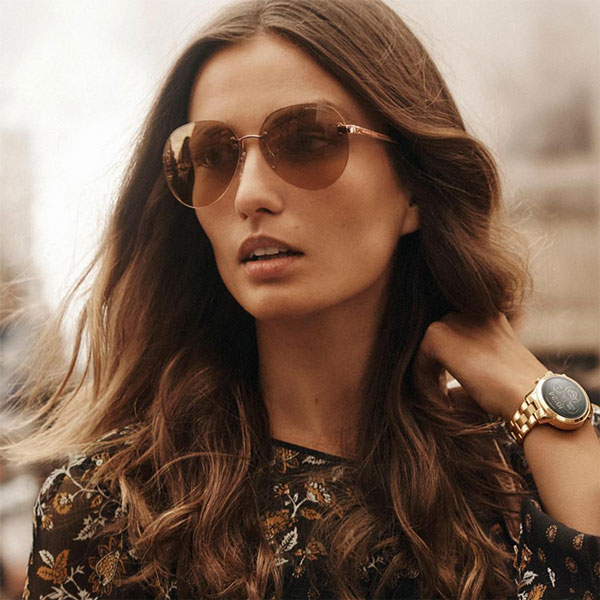
Michael Kors has been in the news quite a bit lately, thanks to its recent $2.1 billion purchase of Italian fashion house Versace. Whether you’re skeptical of the deal or not (personally, I fall into the former camp), it’s undeniable that Michael Kors is a powerhouse company, and only time will tell how this new venture works out and how things will change for Versace—if at all.
In the social media realm, Michael Kors is making some big moves as well. The Instagram Business blog recently detailed a case study in which Michael Kors used carousel ads in its Instagram Stories to promote the new Access smartwatch.
First things first: What’s a carousel ad? According to Instagram, a carousel ad in Stories allows a brand to display up to three different pieces of content but is sold as a single ad package. So basically, just like how you cycle through any number of stories on accounts you follow, the ad allows a brand to display up to three of them.
Michael Kors wanted to use the carousel ads to promote its Access smartwatch, a “new category of smartwatch,” according to the company. Its goals were to reach more shoppers and, ultimately, to increase sales of the product. It’s worth noting that at press time, Michael Kors has 12.6 million followers on Instagram, so it’s casting a wide net with the ads it puts out there. You can definitely learn from an example such as this, but results will obviously vary from retailer to retailer.
With its Access smartwatch at the center of it all, Michael Kors created a trio of ads featuring a busy, beautiful woman: In one ad she’s shopping for flowers and consulting her watch (which is run with Google Assistant) to show her pictures of peony arrangements (presumably for inspiration). In the second ad, she seems to be debating whether to walk or catch a cab, consulting Google (via her Michael Kors watch) about how far away her destination is. And finally, we see the woman, glammed up for the night, meeting Michael Kors himself at an event—a text message from the designer is shown popping up on the watch. The ads do a good job of showing how the watch can be used for the average (city-dwelling) person’s activities, as an on-the-go wearer goes from day-to-night (though not everyone’s evening will culminate in a face-to-face with Kors). Also note that each ad was clickable, leading an Instagram user directly to the Michael Kors website, where the products could be purchased. The ad ran for two weeks during March 2018 and was targeted to U.S. women ages 18 and above.
So, did it work? According to Instagram’s case study, the results were widely positive. Compared to other ad formats, Michael Kors saw a 20 percent higher online return and a three-times-higher click-through rate (among other statistics, which can be seen here).
Instagram uses this case study, among others, to tout the benefits of running a carousel ad over other ad formats, citing its lower cost-per-click benefits and showcasing the results from Michael Kors’ campaign.
Fancy running an ad for the holiday season? In order to create an ad campaign, your account must be recognized as a business account. You can visit this page to learn how to do that.
Have you run an ad campaign—carousel or otherwise—on Instagram or Facebook? I’d love to hear about your experience with the process and your results. Send me an email or sound off in the comments!
(Top image via: @michaelkors)
Follow JCK on Instagram: @jckmagazineFollow JCK on Twitter: @jckmagazine
Follow JCK on Facebook: @jckmagazine